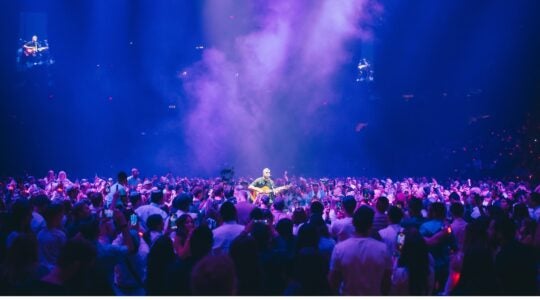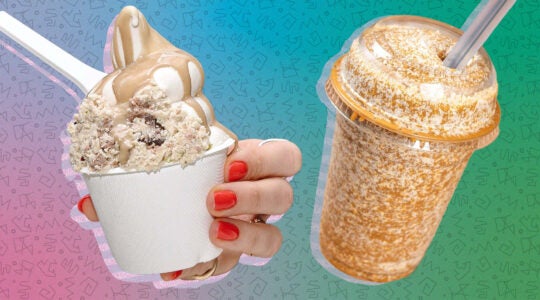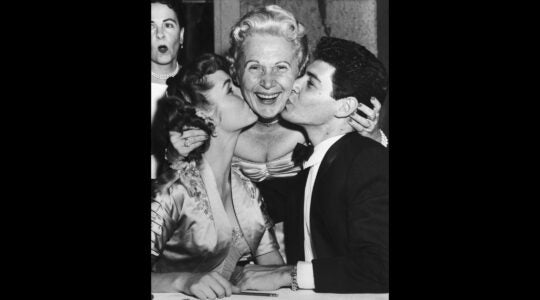Ever thought about celebrating Sukkot in a palm-frond sukkah? Or Shabbat in a temple with a white-sand floor, where Sephardic melodies mingle with traditional British text?
Maybe not, but these are just a few of the surprises awaiting the Jewish traveler in Kingston, Jamaica — a place that, until recently, has attracted few tourists of any kind, let alone Jewish heritage seekers. Most vacationers head to the traditional resorts of Montego Bay, or to the colonial port of Falmouth; the latter, known as the best-preserved Georgian city in the Caribbean, was not traditionally on the Jewish tourist’s radar, either.
But amid the brilliant sunshine and reggae lilt, Jamaican Jewry is undergoing a renaissance. Shaare Shalom – The United Congregation of Israelites, Jamaica’s lone surviving synagogue, recently got its first rabbi in more than three decades — and Rabbi Dana Evan Kaplan says he is intent on building, as he puts it, “an indigenous approach to culture and to ritual.”
And as the Jewish locals reconnect with their vivid, centuries-old heritage, they are inviting Jews from abroad to join the adventure. What makes Jamaica such a kick to visit now is the opportunity to join Jamaicans in uncovering the layers of a still-emerging Jewish heritage — to be an active participant, rather than a passive witness.
“We could use a lot more energy, more effort in understanding Jamaican Judaism,” says Ainsley Henriques, a longtime leader in both the Jewish and civic communities of his native land and an enthusiastic promoter of Jamaican Jewish history. A retired furniture manufacturer, passionate genealogist and lover of Yiddishkeit, Henriques grew up in the shade of palm trees on a plantation. Like so many here, his ancestry is mixed, with Orthodox ancestors from Kiev and Sephardim from Portugal.
That interplay of Sephardic and Ashkenazic — of Jews from warm-weather places and those from the frozen North — is evident at services at Shaare Shalom, where the rituals reflect the influence of both traditions.
Like many Caribbean shuls, the graceful white-stucco temple has sand for a floor (the better to muffle the noise of gathering for closeted Marranos, according to lore). The Torah is lifted before it is read, in a Sephardic practice known as “levantar,” Spanish for “lift,” and the blessing after meals is known in Kingston as “bendigamos,” Spanish for “we bless” — though according to Rabbi Kaplan, the practice originated among Sephardic exiles in Bordeaux, France.
Many congregants are white, but the congregation is multiracial, with diverse roots: descendants of early Iberian, German and English settlers; more recent European, North African and American arrivals, many intermarried with Jamaicans; and a sprinkling of Israelis, due to the presence of several Israeli companies here. Meanwhile, the rabbi is from Manhattan, the congregation is what Kaplan calls “Conservative with a small ‘c’” (though his orientation is Reform), and the prayer book is the shul’s own.
It’s all very New World. But even in the spicy ethnic stew that is the Caribbean, few Jewish communities are so diverse — and yet so historically peaceful, with little anti-Semitism or racial tensions marring coexistence over the past 400 years, according to many interviewed here.
“The richness of this history is really surprising,” says Marina Delfos, and she should know. The daughter of a third-generation Irish-Jamaican mother and an Egyptian-born Greek father, Delfos, who is not Jewish herself, was drawn to the history through a fascination with old cemeteries — there were once 21 Jewish burial grounds in Jamaica — and a series of Jewish boyfriends. Her interest turned professional when she studied heritage management in London, and she now runs Falmouth Jewish Heritage Walks, which is partnering with the local tourism board on a package tour for Jewish visitors.
Only 13 of those 21 cemeteries are still kept up, but that’s still a lot of history to contemplate. Delfos, who is 48 and has lived in Jamaica most of her life, takes cruise passengers on an hour-and-a-half walking tour from the Port of Falmouth through streets lined with pastel Georgian buildings, many of which were once the homes of Jewish merchants.
The 200-year-old Falmouth Jewish cemetery lies a mere two-minute stroll from the harbor. With about 130 graves marked in four different languages, “it’s smaller than the one in Kingston,” Delfos says, “but you still can get a sense of the history.”
Delfos and the tourism board are developing a Jewish heritage day tour aimed at cruise-ship tourists in Falmouth and Montego Bay; the tour will offer visits to the Jewish cemeteries in both towns, meetings with Jewish Jamaicans with a historical overview from Henriques, and a kosher Jamaican cooking demonstration with Vered Maoz, an Israeli-born local who is the island’s only kosher caterer. (Maoz is in demand for catering for destination bar and bat mitzvahs, which represent another way American Jews have been engaging in the history of this place.)
But to really uncover the soul of Jewish Jamaica, you have to go to Kingston. “Most Jews are in Kingston,” says Henriques,” but the disconnect is that most American Jewish tourists never the see the community, because Kingston as a town is not a tourist destination. That’s the drawback.”
Four hours from Montego Bay, Kingston is “a much safer city than you might imagine,” says Rabbi Kaplan, acknowledging its reputation for crime. There are several excellent museums, including a popular coin museum in the Kingston central bank.
The hotels are a bit of a hike from the synagogue, it’s true. But shul officials arrange security guards to accompany nervous visitors, as well as kosher meals for Shabbat observers in town for the weekend. This eagerness to please is due not only to the community’s eagerness to welcome foreign visitors, but also to a distinctly Jamaican spirit.
“Jamaicans are very real and authentic,” says Rabbi Kaplan, a scuba-diving enthusiast who also worked in South Africa and Albany, Ga., before relocating to the tropics. “The warmth of the people here is really gratifying.”
Jamaicans describe themselves as lively, passionate, apt to break into song at any moment. Jewish Jamaicans embrace that identity as well, though as in other small Caribbean communities, assimilation is nibbling away at their numbers.
Henriques concedes that demographics are the major challenge. Jewish children tend to grow up and move away — his own are no exception — and he worries that despite its storied past and hope-filled present, Shaare Shalom may not have a long-term future. “I hope that doesn’t happen in my lifetime,” Henriques sighs.
For now, the only elegies are to be found at the Kingston Jewish Cemetery, one of the most fascinating in all of the New World, with 359 names written in Spanish, Portuguese, Hebrew and English.
“It’s quite an experience to look at graves with insignia that go back to 1672, 1679 — to reflect on the names, these people and their journeys,” Henriques adds. “It tells a story of how this island evolved.” It’s a story he hopes will attract new audiences.
The New York Jewish Week brings you the stories behind the headlines, keeping you connected to Jewish life in New York. Help sustain the reporting you trust by donating today.




